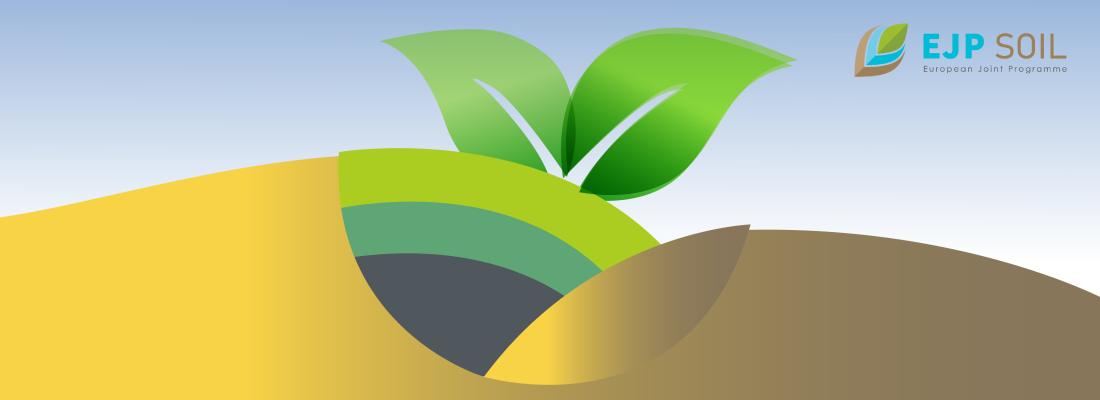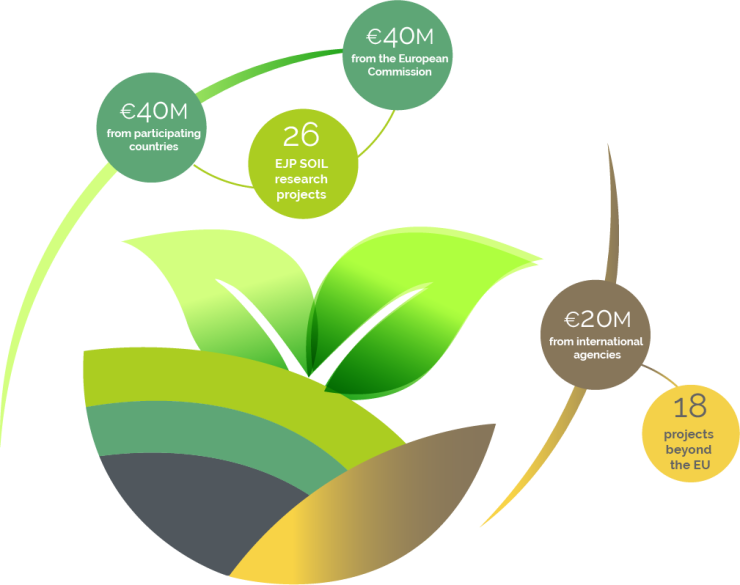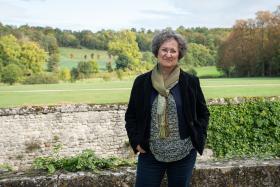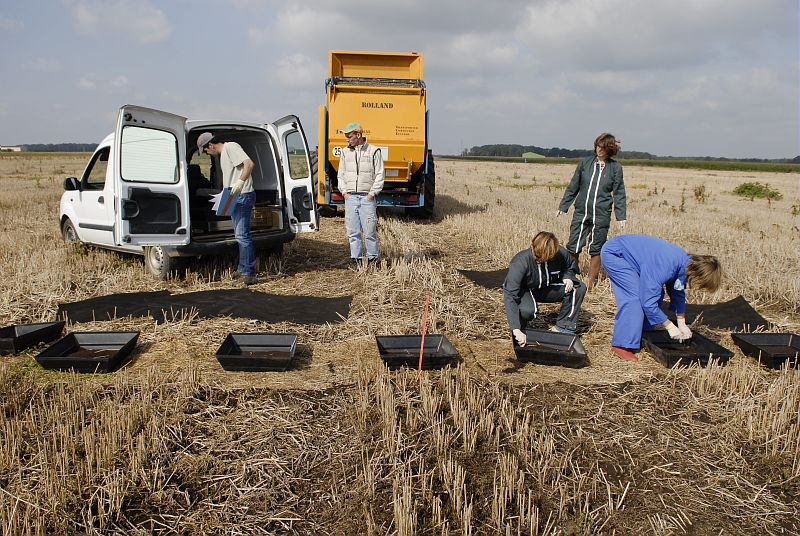Reading time 5 min
European research working towards a common reference framework for sustainable soil management
Published on 12 June 2023

Global awareness of soil health
Soil performs myriad functions that are essential for humans and nature: it helps feed the world, regulates floods, stores carbon and is home to great biodiversity. Yet it is under increasing pressure from climate change and human activity.
In recent years, soil has emerged as an environmental issue globally on several levels. The COP21 climate change conference in Paris and the launch of the “4 per 1000” initiative highlighted the key role soil plays both in mitigating and worsening climate change. Following the COP15 on biodiversity, we now know that 25% of the planet’s biodiversity is found in soils. A very strong European drive for action has emerged as global awareness of the issues rises. The European Commission has launched a new European soil strategy and is drafting a law with an ambitious target for good soil health by 2050, which will be presented later this year in July. These actions also follow the 2021 launch of the European mission “A Soil Deal for Europe”, which will set up 100 living soil labs and a European observatory managed by the European Commission’s Joint Research Centre (JRC).
EJP SOIL aims to provide the scientific knowledge needed to implement effective public policies in national strategies and at European level. The programme is developing research on agricultural soils to improve knowledge of the multiple functions performed by soils and their capacity to store carbon; to build scientific capacities; and to harmonise soil data by conducting an inventory of existing systems and analysing how data on soil quality and health are reported.
The programme, led by European research institutes, has produced a roadmap and is funding internal and external projects. It is committed to developing, sharing and transferring knowledge to society, research universities and public decision-makers.

The European challenge: harmonising soil data
A major challenge at European level is getting the 24 countries involved in the programme, to agree on indicators for monitoring and measuring soil quality. This involves not only choosing the right indicators, but also determining the threshold values, the limits and the way in which these different indicators are aggregated. For example, if a particular soil quality indicator is unsatisfactory, does this mean the soil is considered to be of poor quality and unable to provide ecosystem services?
When it comes to monitoring systems, several countries have their own, but they are not on the same scale and are not interoperable. EJP SOIL inventoried the monitoring systems and soil quality indicators used in each country, as well as the regulations governing soil data. No fewer than 18 European countries have set up soil quality measurement networks; now they must be compared to assess their strengths and weaknesses. The European Commission has developed its own measurement network, which is also being compared with the other systems.
Initial interim results
The inventory of monitoring systems and soil quality indicators has led to recommendations being made to the European Commission on how to move from one system to another and leverage this information at European level. The European Commission used these results to draw up the soil health law, which will include soil health indicators and introduce monitoring based on the codification of indicators. Workshops for public policymakers are now under way to increase the level of knowledge and reflection of those involved in drawing up measures.
EJP SOIL has also set up national hubs in 19 countries, with committees comprising soil experts and stakeholders, including scientists, farmers, industrial players, associations and politicians. Since the programme began, they have been consulted about each country’s specific needs in order to adapt and prioritise the challenges to address. This approach has also been adopted by the European Commission, which is funding the European PrepSoil project, in which INRAE is involved. The project will prepare the European soil mission and propose a European hub, equivalent to the model developed by the EJP SOIL.
What contribution is the programme making beyond Europe?

For Claire Chenu, Research Director at INRAE and coordinator of EJP SOIL, the programme has led to advances in the international structuring of soil research consortia. “The crucial role of soil is recognised in many countries around the world, and the momentum is especially strong in certain countries. But there are few international funding opportunities for soil research. With this programme, we have paved the way by obtaining international funding to initiate the first international soil research network. We have connected international funders and shown that it is possible to agree on priority themes, negotiate documents for calls for projects and arrange to have everyone providing funds on behalf of their own country on an international scale. It’s been extremely successful from this point of view.”
Research projects coordinated by INRAE
INRAE is contributing to the programme in a major way through its highly varied research, including in the economic and social sciences. It is also coordinating three projects.
Modelling and mapping the threats and ecosystem services linked to soil functioning
SERENA involves 16 European countries working to construct indicators to assess, analyse and map (from local to European scale) the threats and systemic services linked to soil functions in European agricultural landscapes.
SERENA’s strengths include bringing end-users and stakeholders into the project, looking at threats and services as two sides of the same coin (soils are reservoirs of biodiversity, but biodiversity is also largely under threat) and examining groupings of threats and services, because soil stakeholders are often interested in several threats or services simultaneously.
The end goal is to converge towards common indicators for preserving or improving ecosystem service provision in landscapes while limiting soil degradation in order to better inform policymakers’ decisions.
Waste as a resource for soil fertility
Within the scope of the circular economy, waste (food waste, sewage sludge, green waste, digestate from anaerobic digestion, agricultural co-products, etc.) rich in organic matter could be an interesting resource to enhance soil fertility. But under what conditions could this be possible?
This type of organic matter can also be a source of contaminants (pollutants, pathogens, plastics, etc.) and impact the quality of crops, water and air. The effects of repeated application of this organic matter must be assessed over the long term to promote (or not!) the development and sustainability of recycling processes for such waste. This is the aim of the EOM4SOIL project, which is working to assess the benefits and risks associated with returning this waste to the soil. With a focus on greenhouse gas emissions, including during the waste pretreatment and field application stages, the presence and diffusion of contaminants in soils, as well as to analyse the net balance of carbon storage in soils.

A roadmap for carbon programmes
Meeting Europe’s targets for reducing greenhouse gas emissions requires the active involvement of all sectors, including agriculture. In recent years, a number of initiatives have emerged to encourage farmers to adopt practices that help reduce their greenhouse gas emissions and sequester carbon, known as ‘carbon farming’. If farmers adopt these practices, they may be able to secure higher selling prices or sell their net emission reductions as credits to companies wishing to offset their own emissions. These measures raise issues related to monitoring and verifying the effectiveness of emissions reductions.
Road4Schemes has already identified over 150 private and public initiatives of this type in Europe and analysed their strengths and weaknesses. The analysis has also shed light on the potential trade-off between widespread adoption of this type of system by farmers and the monitoring and control costs required to ensure its environmental integrity.
Ultimately, Road4schemes will create a roadmap for implementing such systems so that they effectively and efficiently support European mitigation objectives.
